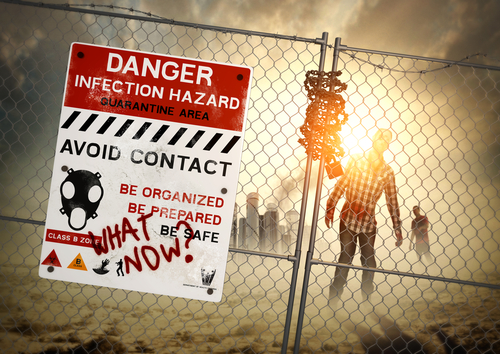As the Centers for Disease Control and Prevention continue to give us more guidelines on the monkeypox and COVID, it begs the question: is there more to come?
Many experts say they fear that increasing outbreaks of diseases that jump from animals to humans could spark another pandemic. Olivier Restif, an epidemiologist at the University of Cambridge said the number of zoonotic pathogens and outbreaks has increased in the past few decades due to “population growth, livestock growth, and encroachment into wildlife habitats”.
Around 60 percent of all known human infections are zoonotic, meaning they jumped from animals to humans. As much as 75 percent of all new and emerging infectious diseases are also zoonotic, including HIV, Ebola, Zika, SARS, MERS, and bird flu, according to the UN Environment Programme.
And worse may be to come, with a major study published earlier this year warning that climate change is ramping the risk of another pandemic. As animals flee their warming natural habitats they will meet other species for the first time potentially infecting them with some of the 10,000 zoonotic viruses believed to be “circulating silently” among wild mammals, mostly in tropical forests, the study said. “Wild animals have drastically changed their behaviors in response to human activities, migrating from their depleted habitats,” he said.
On Thursday, a World Health Organization scientific advisory group released a preliminary report outlining what needs to be done when a new zoonotic pathogen emerges. It lists a range of early investigations into how and where the pathogen jumped to humans, determining the potential risk, as well as longer-term environmental impacts.
They are urging the population to be ready for another pandemic. As we have learned from the COVID nightmare, no country is truly prepared; so it is up to the individuals. It can be tough though, especially for those living in high-population areas.
Looking back at the Black Plague, those living in high populated areas were hit hardest by this pandemic. The Black Death is estimated to have killed 30–60 percent of Europe’s population. Given our vast array of transportation systems, modern society causes infectious disease to spread far more rapidly compared to any other time in recorded history; and because pandemics are fast-moving, vaccinations would be useless. Further, in regards to the world’s transportation system, the morbidity rate in a future pandemic could result in millions seeking medical care at the same time thus overwhelming hospitals and emergency departments. -Ready Nutrition
We should all expect more zoonotic viruses will infect humans and cause another outbreak. It could be as mild as a cold, or it could be something that is deadly and has a serious mortality rate. Either way, stockpile what you can now. Over-the-counter medications to deal with symptoms can be useful. Make sure you have a well-stocked first-aid kit and can access clean water.
Read more about preparing for pandemics
52-Weeks to Preparedness: An Emergency Preparedness Plan For Surviving Virtually Any Disaster
Other ways to prepare for future pandemics include having a quarantine plan. Consider ways to get rid of human waste or quarantine a sick family member especially if the illness is one of a hemorrhagic or intestinal nature. These types of viruses can be deadly and do lasting harm, so you will need to make absolutely sure you have heavy-weight trash bags, rubber gloves, eye protection, and even a full-body Tyvek suit if possible.
The New Book You Need To Prepare For and Survive a Deadly Pandemic
The reality is that no authority or government is prepared and we are on our own. We need to use our best judgment based on research and logical assessments of situations to make the right decisions for ourselves and our families.
This article was originally published at Ready Nutrition™ on June 21st, 2022







